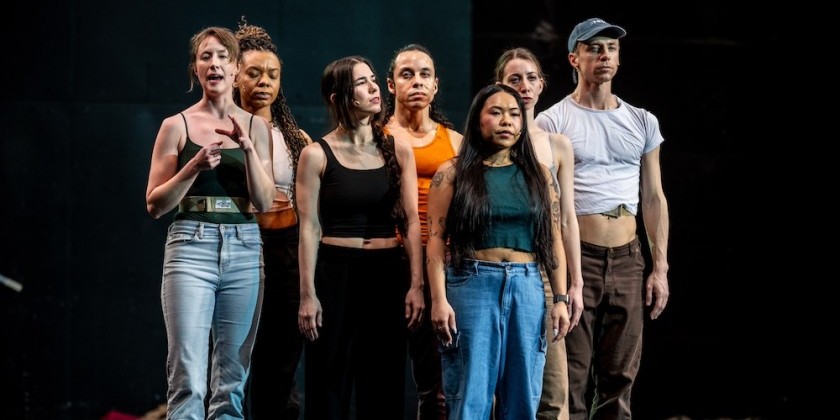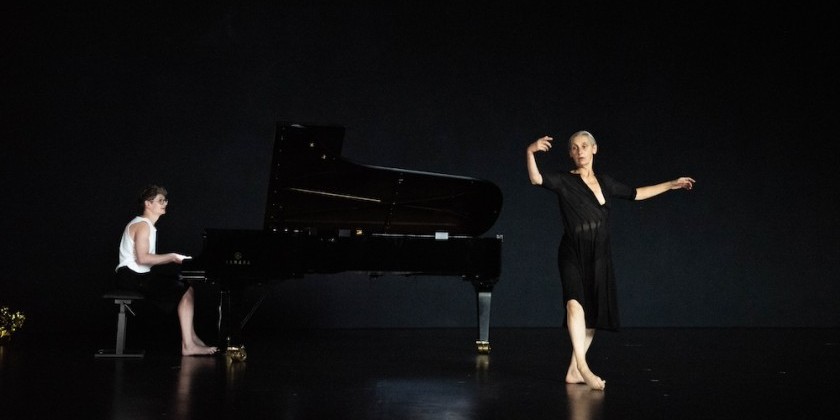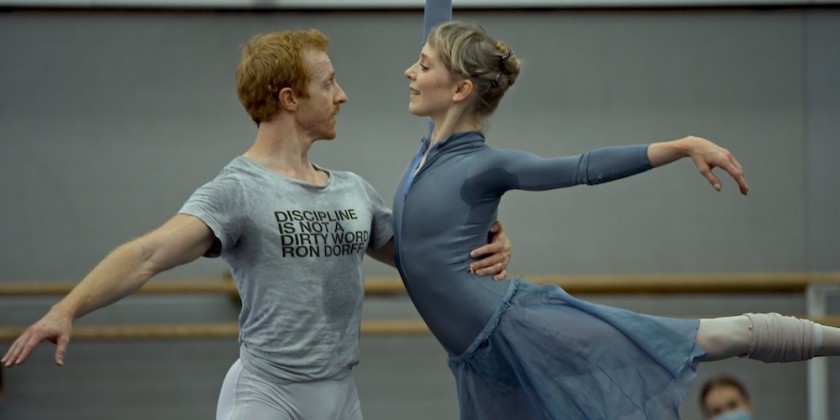IMPRESSIONS: Anne Teresa De Keersmaeker, Jean-Guihen Queyras/ROSAS' "Mitten Wir Im Leben Sind (In the Midst of Life)" at NYU Skirball

February 13, 2020
Choreographer/Dancer: Anne Teresa De Keersmaeker
Dancers: Bostjan Antoncic, Marie Goudot, Julien Monty, Michael Pomero
Musician: Jean-Guihen Queyras // Composer: Johann Sebastian Bach
Costumes: An D’Huys // Lighting: Luc Schaltin // Dramaturgy: Jan Vandenhouwe
Writing for the New York Times, Zachary Woolfe describes Bach’s Cello Suites as follows, “Their magic lies in a perfect balance of exploration and security. They move through harmonic progressions with scientific curiosity and patience, but also with an intensity of feeling that keeps releasing, over and over.”
The same could be said about Anne Teresa De Keersmaeker’s masterful Mitten Wir Im Leben Sind/Bach6 Cellosuiten, which received its New York premiere at NYU Skirball. The audience drank in the experience like parched animals.

Before each of the six compositions, De Keersmaeker walks downstage left where she makes cryptic gestures, topping them off by holding up fingers to indicate the number of the upcoming suite. Both she and musician Jean-Guihen Queyras seem fragile and thin as cello strings, yet grounded by their concentration required for this two-hour-plus tour de force. In contrast, the male dancers — Bostjan Antoncic, Julien Monty, and Michael Pomero — appear as matter-of-fact workers, dressed in sneakers, black shorts, and tops. Imagine your hunky plumber hovering on one foot, mesmerized by a note that continues to vibrate in silence.

Presented just before the opening of West Side Story, revived by Ivo van Hove and De Keersmaeker, Mitten Wir Im Leben Sind/Bach6 Cellosuiten follows the suites’ emotional rhythms in solos, duets, and a group romp for the gigue. Liberties are taken. A dancer lies down for a passage; when the cellist leaves, the dancer remains, as though in a trance, until he falls, slowly disappearing off the stage’s edge.
Besides the calibrated walking, arm swings, fouettés, and impulsive dashes that sometimes slam against the back wall, De Keersmaeker occasionally alludes to the period dances — the allemande, courante, sarabande, minuet, and gigue — with a gesture. At one point, she, wearing sneakers and a beguiling dress slit to the hip on one side, and Marie Goudot move side by side with one hand raised to shoulder height, almost touching. De Keersmaeker slides in some quirky departures for herself, such as a pigeon-toed walk, a hint of a grin, a finger point, and a wag of the head.

Once Queyras, whose chair is repositioned for each suite, plays alone in a soft pool of light. This alone could make your day — so sensitive and sensual is his performance.
At the outset, circles have been drawn on the stage. By the end, those circles are overlaid with colored tape, placed in triangles and other forms between the suites. They invite us to muse on the implications of geometry.















